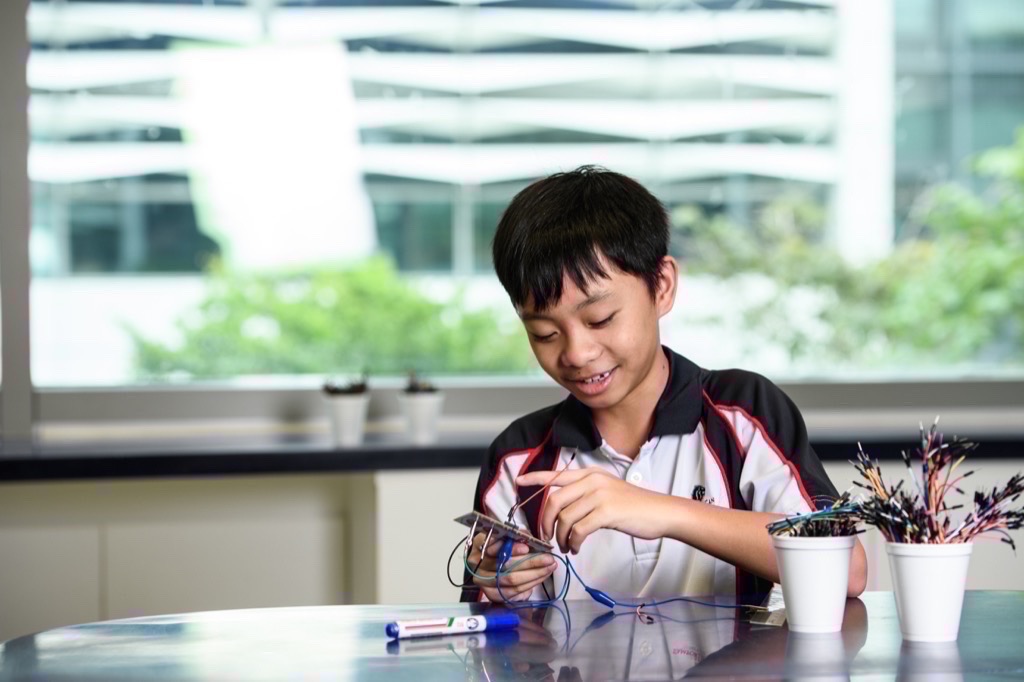The STEM curriculum – Science, Technology, Engineering and Mathematics – has been growing in popularity in recent years, as the best way to equip our kids for the future. But when it comes to STEM education, Stamford American School Hong Kong has added one more ingredient to their STEM program – innovation. STEMinn invites kids to get creative and think outside the box and prepare them for a world where 65 per cent of the jobs they will have don’t even exist yet.

What is STEMinn?
The school’s problem-based STEMinn program shakes up the way kids have traditionally learnt science and tech subjects. By adding the element of innovation, students are challenged to think creatively, use their imaginations and develop critical thinking that goes way beyond rote learning. While studying science or maths from a textbook allows kids to learn core principles and theory, studying STEMinn gives them a chance to apply these concepts to real-world problems. Many experts believe this type of learning will grow the next generation of creative thinkers ready for careers as engineers, scientists, entrepreneurs and business leaders.
Teaching innovation
Stamford has dedicated facilities which allow their students to create and test prototypes and think like a mini scientist. In this practical setting they can explore ideas and gain tangible skills. Projects might see a student coding an app, or designing interactive devices in a robotics class. Students are challenged to solve problems with innovative ideas and to get hands-on in the design and production process of their solutions, whether improving on an existing idea or realising a dream.
A planned collaborative ‘makerspace’ area will be kitted out with all kinds of gadgets for project creation including 3D printers, electronics, robotics, coding, textiles/fashion, printing and laser cutting. Stamford’s classroom libraries also include science and engineering reading material, suitable for all ages.
When does STEMinn begin?
STEMinn begins with five weekly sessions for five-year-olds and increases to nine units of innovation in grade five. These foundations are laid to prepare elementary students for the highly challenging physics, biology and chemistry courses in secondary school.
Why does innovation matter?
It is predicted that over the next 10 years, the demand for scientists and engineers will increase at four times the rate as other occupations, according to US education thinktank STEMconnector. Its research also estimates that by next year the US alone will require 8.65 million more workers in STEM-related jobs and this number will only grow. Stamford also cite research in Now You See It, by US technology academic Professor Cathy N Davidson, which says more than 65 per cent of jobs that our children will have in the future do not exist today as further evidence of the need for innovation in their curriculum.
It is this which has led to the formation of Stamford’s ethos that the goal of education isn’t to solve some of yesterday’s problems, but to tackle problems in the future that we don’t know about today, using technology that hasn’t been invented yet.
Stamford American School will open in September 2017 at 25 Man Fuk Road, Ho Man Tin, Kowloon, Hong Kong. In the meantime, Stamford’s Admissions Team would be happy to meet with families at their Admissions Office located at Two Exchange Square, Level 40, Suites 4005-4007, 8 Connaught Place, Central, Hong Kong.
2500 8688 | sais.edu.hk | admissions@sais.edu.hk
This article is sponsored content
Find out more about Stamford in our schools section:
New international school in Hong Kong offers a personalised approach





